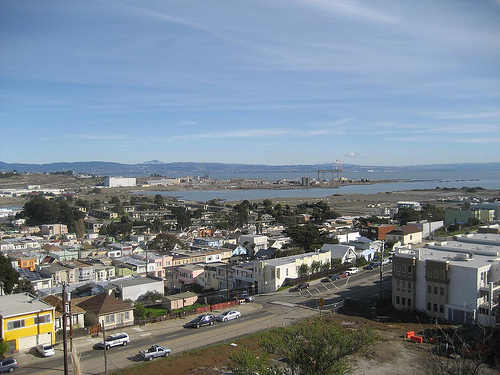At its peak in the 1940s, the Hunters Point Naval Shipyard employed up to 17,000 people.Photo: LOC, HAER CAL,38-SANFRA,195A-3
The Hunters Point Naval Shipyard covers 500 acres on San Francisco’s southeastern flank, jutting out into the bay like the fletching of a giant arrow. Acquired by the U.S. Navy in 1940, it was once one of the West Coast’s largest shipyards, at its World War II peak employing up to 17,000 people, many of them African Americans who settled nearby. The Navy ended its work at the Shipyard in 1974, devastating the local economy, and it was eventually listed for cleanup as a Superfund-equivalent site. These days, it’s a rusting city unto itself, its drydock and warehouses abandoned. For a long time, its only tenants were the city’s crime lab and artists drawn by the cheap space and haunting surroundings: a boarded-up diner, its Pepsi sign intact; the giant crane where the Navy once tested rockets; deserted labs that hosted radiological experiments.
As one of the largest chunks of vacant land left in San Francisco — which has some of the highest land values and housing costs in the country — the shipyard repr... Read more
